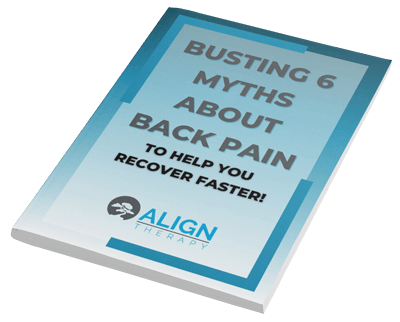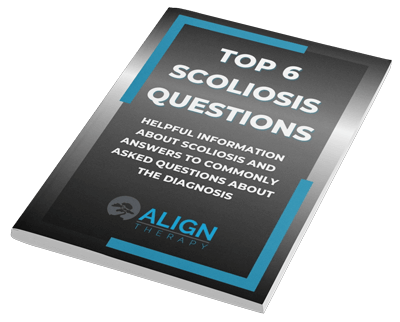Living with scoliosis doesn’t just mean managing a curved spine—it often means dealing with pain, discomfort, and limitations in your daily life. While medical treatment and physical therapy are essential for long-term management, many people are surprised to learn that simple at-home strategies can offer real relief between appointments.
Whether your scoliosis pain is a constant nagging presence or flares up after certain activities, this guide will walk you through safe, practical ways to reduce your discomfort right from the comfort of home.
And if this topic hits home for you… keep an eye out—we may have something exciting coming your way soon that could make a big difference.
What Causes Scoliosis Pain?
Scoliosis itself isn’t always painful, especially in younger people. However, over time, the abnormal spinal curvature can lead to:
- Muscle imbalances
- Joint stiffness
- Compressed nerves
- Fatigue from poor posture
Adults with scoliosis are more likely to experience chronic back pain, neck tightness, hip discomfort, and even numbness or tingling in the limbs. That’s why staying ahead of your symptoms is key.
1. Stretch Daily to Release Tension
Tight muscles around the spine are one of the most common causes of scoliosis pain. These muscles often compensate for the curvature, leading to tension and fatigue. Daily stretching helps:
- Improve flexibility
- Reduce muscular imbalances
- Ease joint stiffness
Try These Stretches:
- Child’s Pose: Gently opens the spine and relieves lower back tightness
- Cat-Cow Stretch: Improves spinal mobility and posture
- Side Bend Stretch: Helps even out tension on either side of the body
Pro Tip: Focus on the side that feels most tense, but don’t neglect the other. Consistency matters more than intensity.
2. Incorporate Core Strengthening
Your core is your spine’s best support system. A strong core can take pressure off the lower back, support your posture, and help you move with more confidence and less pain.
Effective At-Home Core Exercises:
- Bird Dog: Great for balance and back stabilization
- Glute Bridge: Activates the hips and lower spine support muscles
- Pelvic Tilts: Helps build awareness and strength in the deep abdominal muscles
Start slow—aim for 2–3 sets of each exercise a few times per week and gradually build as tolerated.
3. Use Heat and Cold Therapy
You don’t need fancy equipment to reduce scoliosis pain—just a heating pad and an ice pack can work wonders.
- Heat: Relaxes tight muscles and improves blood flow
- Cold: Reduces inflammation and numbs sharp pain
How to Use:
- Apply heat to stiff or sore areas before stretching or exercising
- Use cold packs on inflamed or irritated areas after activity
Stick to 15–20 minutes at a time and always use a barrier (like a towel) between your skin and the source.
4. Adjust Your Sleeping Position
How you sleep can have a big impact on scoliosis pain. The wrong position may cause your spine to stay misaligned for hours at a time, leading to morning stiffness or even headaches.
Tips for Better Sleep:
- Side sleeping with a pillow between the knees can reduce spinal stress
- Use a firm mattress for proper support
- A body pillow can help keep your spine in a neutral position
Avoid sleeping on your stomach if possible—it tends to twist the neck and low back in ways that increase pain.
5. Practice Mindful Breathing & Relaxation
Scoliosis pain isn’t just physical—it can take a toll on your mental health. Anxiety, stress, and shallow breathing patterns can worsen tension in the body.
At-home relaxation techniques:
- Diaphragmatic breathing: Deep breathing that expands the ribs and strengthens postural muscles
- Progressive muscle relaxation: Slowly tensing and releasing muscles to relieve stress
- Guided meditation: Helps reduce the emotional impact of chronic pain
Taking just 10 minutes a day to relax your nervous system can significantly reduce overall discomfort.
6. Try Gentle Movement (Like Walking or Swimming)
Movement is medicine—even when you’re in pain. In fact, staying still for too long can make scoliosis pain worse. Gentle activity can:
- Lubricate your joints
- Boost circulation
- Prevent stiffness
Low-impact options like walking, swimming, or light cycling are excellent ways to keep your spine moving without adding extra strain.
Aim for 20–30 minutes a day of movement you enjoy. Your spine—and your mood—will thank you.
7. Invest in a Supportive Workspace
Many people with scoliosis spend long hours sitting at a desk or standing for work. Bad ergonomics can turn a small curve into a major source of pain.
Quick Workspace Fixes:
- Use a lumbar support pillow in your chair
- Adjust your screen so it’s at eye level
- Keep feet flat on the floor or use a footrest
- Take a short stretch break every 30–45 minutes
Small adjustments can make a big difference over time.
8. Stay Hydrated and Nourished
Believe it or not, nutrition plays a role in managing scoliosis pain. Staying hydrated keeps your spinal discs healthy, and certain foods can reduce inflammation.
Eat more of these:
- Leafy greens (spinach, kale)
- Fatty fish (salmon, sardines)
- Berries
- Nuts and seeds
And don’t forget water—aim for 8+ cups per day unless advised otherwise.
9. Use a Foam Roller or Massage Ball
Self-massage tools like foam rollers or massage balls can relieve tight muscles in the back, hips, and shoulders. They’re great for:
- Improving circulation
- Breaking up muscle knots
- Preparing your body for movement
Start with just a few minutes a day on areas that feel tense. Avoid direct pressure on the spine itself—focus on the muscles around it.
10. Know When to Ask for Help
At-home remedies are powerful—but if your pain is getting worse, interfering with your daily life, or limiting your mobility, it’s time to get personalized help.
A scoliosis specialist can:
- Evaluate your curve progression
- Design a targeted exercise plan
- Provide manual therapy to reduce muscle tension
- Recommend custom bracing or further interventions if needed
If this blog spoke to you… stay tuned. We may have something exciting on the horizon that could help you take the next step toward lasting scoliosis relief. 😉
Final Thoughts
Scoliosis doesn’t have to define your day—or your life. With consistent, intentional at-home care, it’s possible to reduce pain, improve your posture, and stay active.
These 10 at-home remedies are a great place to start. And remember, even small changes can lead to big results when done consistently.
Want to stay in the loop for future updates, educational opportunities, and resources? We’d love to keep in touch. And who knows… your next breakthrough could be just around the corner.



